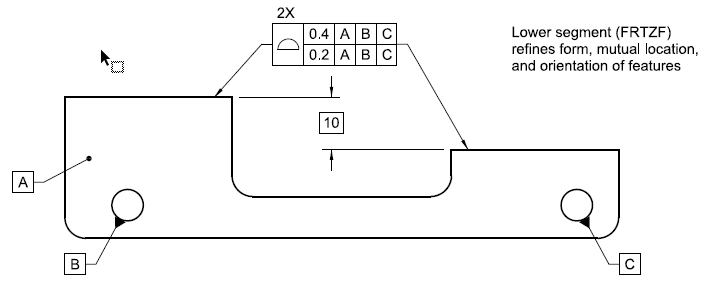Evan,
We may be agreeing more than disagreeing in essence.
Although yes, I do think that the datum feature that "finishes the job" of applying a constraint is the one that officially constrains whatever degree of freedom is considered, but I think it is so in every single case of any datum reference frame of more than one datum being used. The preceding datum references always "lay the foundation" for the constraints applied by the subsequent references.
I'm no committee member or a well known GD&T trainer, but I do my best to explain the concepts to my coworkers according to my best understanding, and what I always tell is that every datum, whether it is a point, a line, a plane or a combination of them, is connecting the part in a way to one or more planes and at least two axes of the DRF. You can't continue connecting the part to the DRF by secondary and tertiary references before the initial connection is made by the primary or primary and secondary references.
The case of the secondary cylinder datum axis and the tertiary slot center plane being discussed here are no exception. A simpler example for the same principle is just two planar datum features referenced as primary and secondary. The primary may establish the connection to the XY plane and constrain Z, u, and v. The secondary then constrains X and w - but it couldn't do so unless the part was previously aligned to the XY plane!
Now with that in mind if we examine the primary plane, secondary axis, tertiary center plane example - the tertiary reference can't constrain rotation about the secondary axis before the connection of the part to that axis is established by the primary and secondary datum references. But that's not unique and doesn't mean that the rotation is constrained by both the bore and slot and their simulators - only the slot and the simulator tab do that after the ground for it is ready.
Note that the datum feature and simulator B do constrain that part in translational degrees of freedom - but they do not constrain the FRTZF which can translate relative to the applicable DRF by floating!

